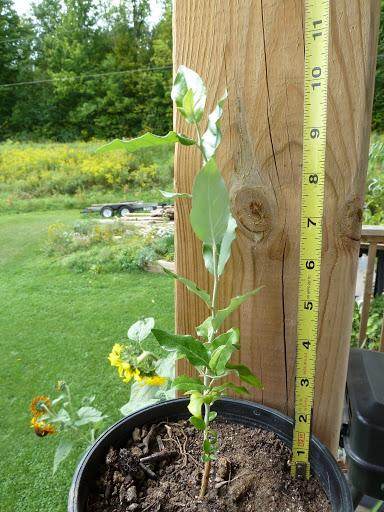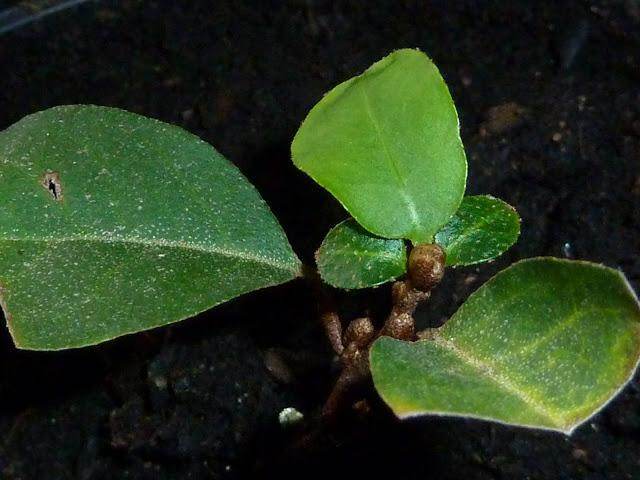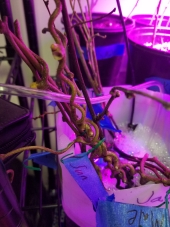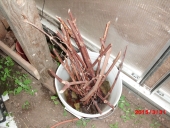




Anyone who believes exponential growth can go on forever in a finite world is either a madman or an economist.




We live in Nashville, Tennessee, USA
www.permavations.com
 2
2




http://www.greenshireecofarms.com
Zone 5a in Central Ontario, Canada
 1
1









Deston Lee wrote:
I have been layering malus, vaccinium, pyrus, and ribes.
Anyone who believes exponential growth can go on forever in a finite world is either a madman or an economist.




 2
2








find religion! church
kiva! hyvä! iloinen! pikkumaatila
get stung! beehives
be hospitable! host-a-hive
be antisocial! facespace





Paul Cereghino- Ecosystem Guild
Maritime Temperate Coniferous Rainforest - Mild Wet Winter, Dry Summer








The ultimate goal of farming is not the growing of crops, but the cultivation and perfection of human beings. - Masanobu Fukuoka




Our inability to change everything should not stop us from changing what we can.




MikeH wrote:
Exactly how are you layering each?




Paul Cereghino wrote:
I did my thesis on hardwood cuttings for restoration...





Deston Lee wrote:
@tel: I need to show you theold orchard up here. @ 30 trees 100+ years old, total feral heirlooms. . also have permission to get on Ft lewis and pull scions from 3 old orchards up there- old varieties- I ate til my tummy hurt last fall.
find religion! church
kiva! hyvä! iloinen! pikkumaatila
get stung! beehives
be hospitable! host-a-hive
be antisocial! facespace










Paul Cereghino- Ecosystem Guild
Maritime Temperate Coniferous Rainforest - Mild Wet Winter, Dry Summer












Deston Lee wrote:
malus & pyrus- ive got two apples, one pear layered, about 24 starts in all, using basic ground layering- low limb weighted to the ground with abraision on stem/leaf nodes which are covered - im my case, @ 18" of 1/2" d branch pinned to abre ground covered with leaf mulch 12" deep and weighted with a small log. the leafy branh tops stick out about 24" on the other side.
The vaccinium (two blueberry varieties, and red huckleberry) , and ribes (2 species of gooseberry and the local red flowering currant) are a mish mash of propagation fixes...broken gooseberry twigs from a dog attack (half a dozen pulled through after the delimbing) were dipped in hormone and directly potted and now are transplanted, red currant is layering and the blueberries are layer as above with malus/pyrus. the mulches are different on each- the red hucks get a doug fir decayed log mulch, the blueberries get a leaf litter and sawdust/horsemanure mulch, the ribes a similar mulch with more leaves.
Anyone who believes exponential growth can go on forever in a finite world is either a madman or an economist.








Ed wrote:
Two questions for those that have done alot starting from seed. Is there a book or a site that is recommended for this process?
Ed

Anyone who believes exponential growth can go on forever in a finite world is either a madman or an economist.








The ultimate goal of farming is not the growing of crops, but the cultivation and perfection of human beings. - Masanobu Fukuoka





The Earth Garden
Gardening and environmental forum
The Natural Order
Environment, permaculture, and related videos






Paul Cereghino- Ecosystem Guild
Maritime Temperate Coniferous Rainforest - Mild Wet Winter, Dry Summer
 2
2




MikeH wrote:
Have you actually had success with these or are they in progress, ie, not yet rooted?
Why are the mulches different on each?





Deston Lee wrote:
Ground layering is a common practice. this is the second year Ive done it, last years layerings did well. Im doing many more this year, and will go back to it when I get to Abundance from my current travels.
the different mulches are made to roughly mimic the desired ph balance and nutrient compostion of the plant in question. red hUckkleberry is picky, growing almost exclusively on doug fir and hemlock deadwood in mid to late decay. Blueberries grow in bogs and like acid, almost peaty soil.
so I am angling the mulches to those compositions. thats about as far as my think goes with it... its worked so far, an mom, with 40 years in nurseries, said it should be ok...if mom says its ok..

Anyone who believes exponential growth can go on forever in a finite world is either a madman or an economist.
















Wesley wrote:
This fall I made my first attempt to root cuttings from a Goumi bush. How long should I wait before I declare a 'learning experience' and try something else?






 Having said that I just ordered [78]Sheat. W. G. Propagation of Trees, Shrubs and Conifers from alibris for C$12.73 plus shipping.
Having said that I just ordered [78]Sheat. W. G. Propagation of Trees, Shrubs and Conifers from alibris for C$12.73 plus shipping.Anyone who believes exponential growth can go on forever in a finite world is either a madman or an economist.
 1
1




There is nothing permanent in a culture dependent on such temporaries as civilization.
www.feralfarmagroforestry.com
















Ed wrote:
We want to do a whole lot more with blue honeysuckle in the coming years. It grows well here, and fruits early. Found a wholesale place in Canada where we could get them for 7.50 a piece but the minimum order was 500.00
Ed
Anyone who believes exponential growth can go on forever in a finite world is either a madman or an economist.





|
You would be much easier to understand if you took that bucket off of your head. And that goes for the tiny ad too!
The new purple deck of permaculture playing cards
https://www.kickstarter.com/projects/paulwheaton/garden-cards
|





